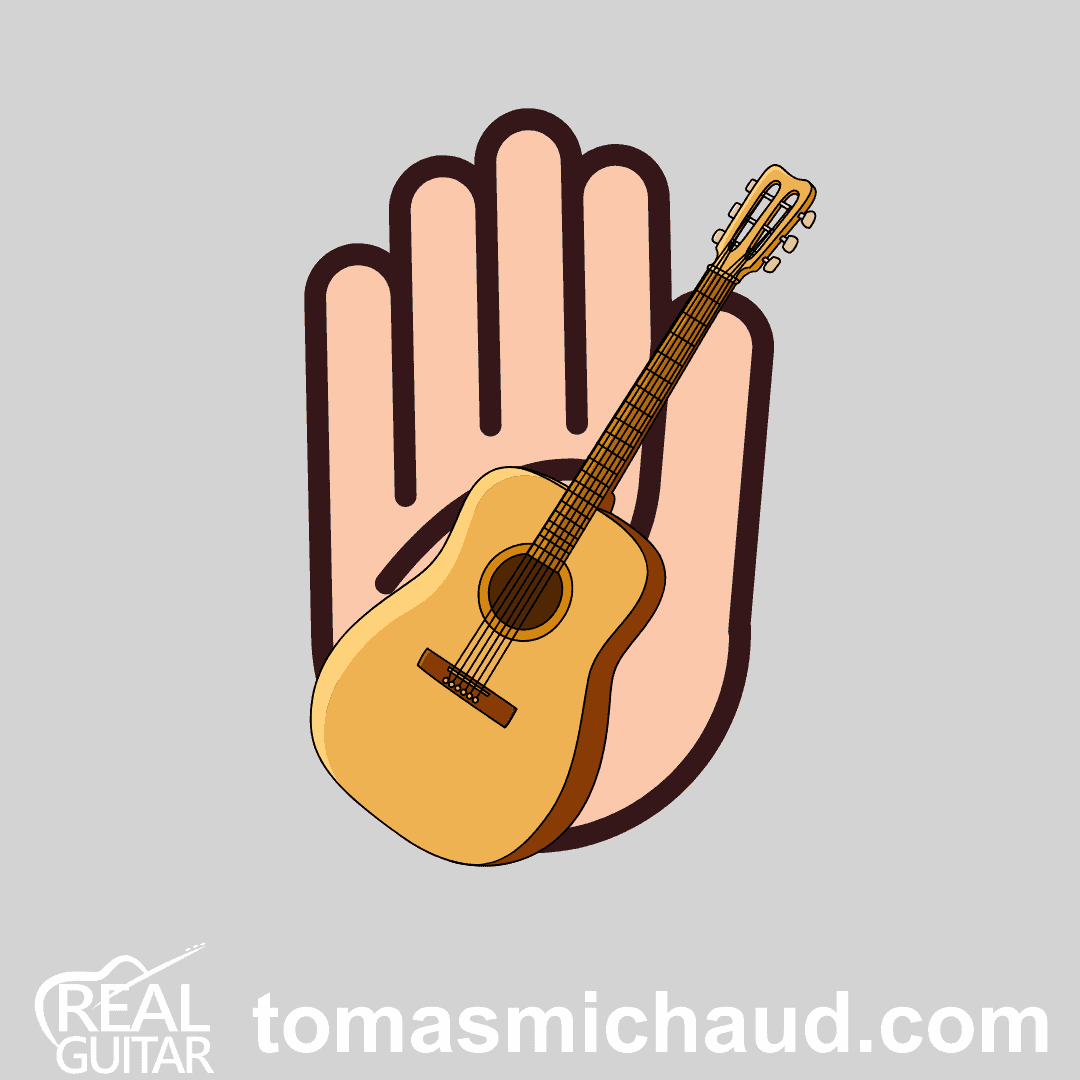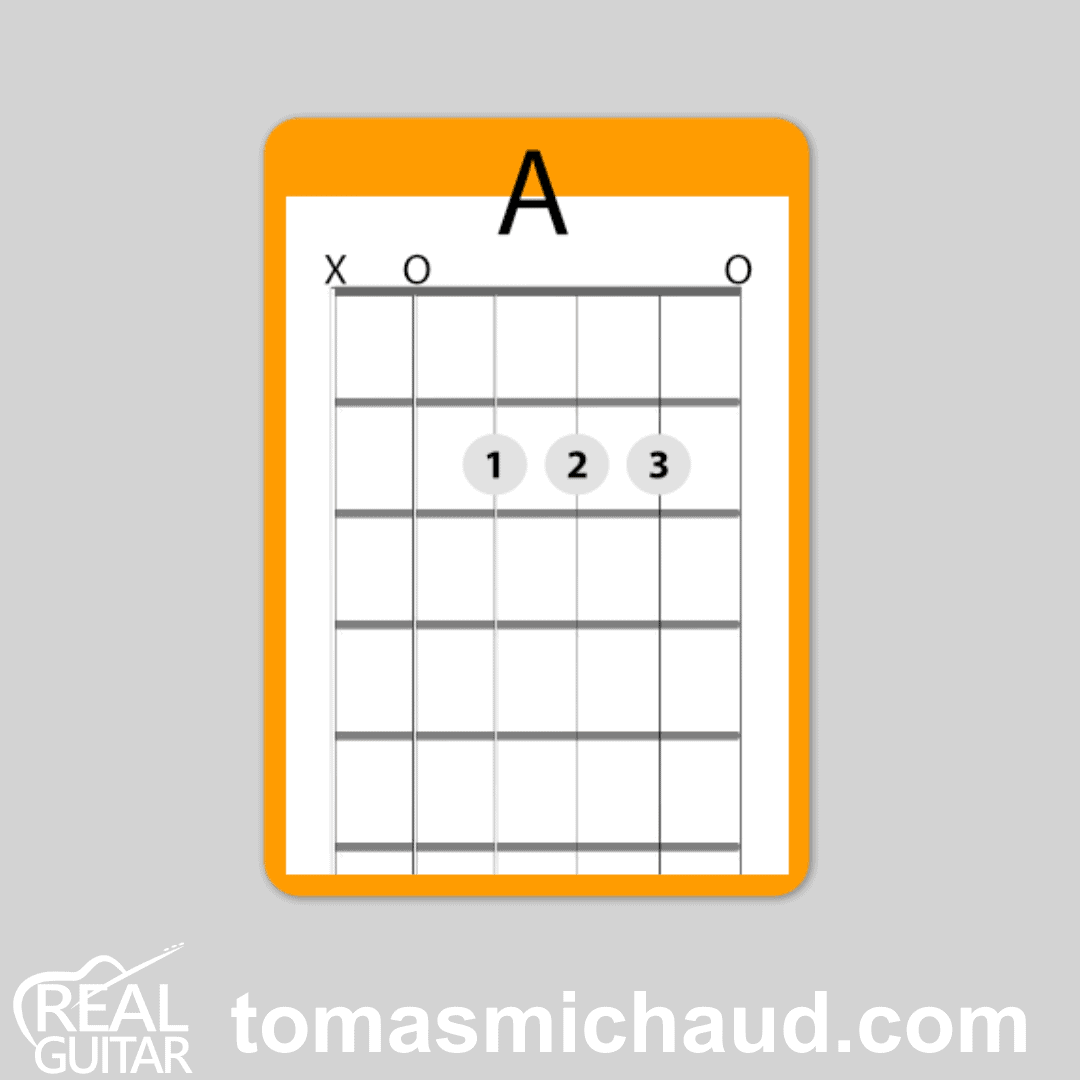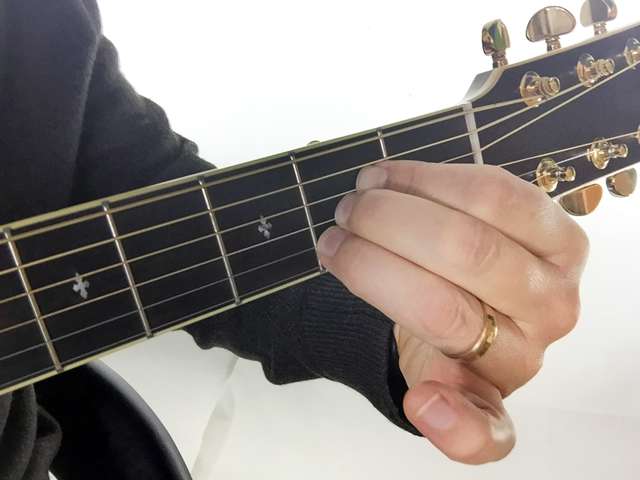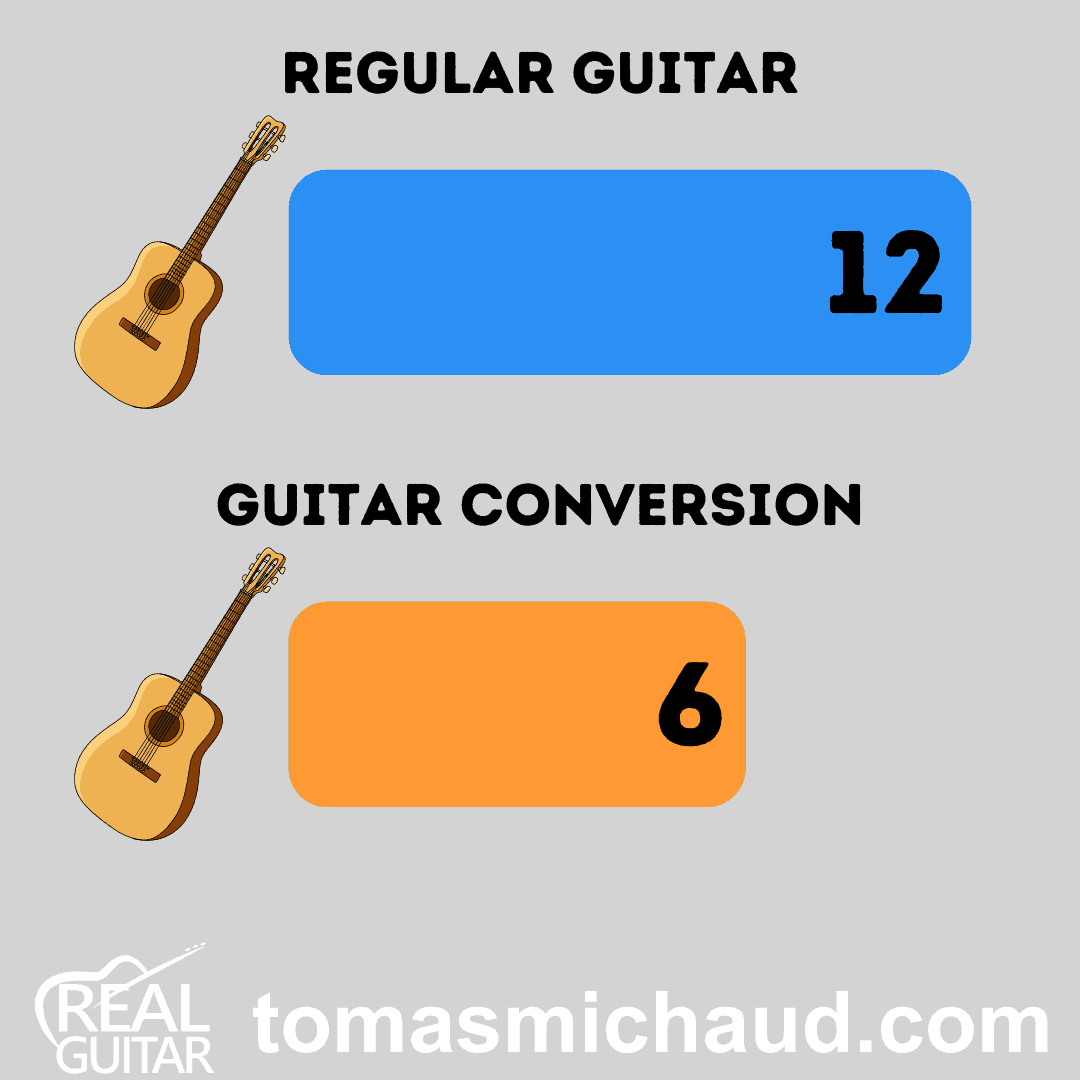There are many issues to struggle with when first learning guitar, but they can be divided into two camps. The first is stretching, as in “my fingers won’t stretch far enough to create the chord”, and the second is something like “my fingers are too fat to fit altogether”.
Today I want to talk about the “fat finger” dilemma.
Thick Fingers And The “A” Chord

Usually when a beginner complains that their fingers are too fat it’s because they're struggling with the A chord. Let's start there, and then I can give you more general ideas that will apply to fingering chords in general.
Form #1 – The Common “A” Chord

A common form of the A chord when you're first learning is putting your 1st, 2nd and 3rd fingers altogether on the 2nd fret. Usually students can finger the chord even if their fingers are fairly thick if they don't try to get the fingers in a straight line.
You’ll want to angle your fingers so that the 1st finger is back quite a bit compared to the 3rd finger. Work to make sure that the strings still make good contact with the 2nd fret and don't buzz.

Form #2 – The Mini Bar “A” Chord
Another alternative form I use fairly often is a two finger a chord. To make this chord you’ll use your 1st finger to cover both the 4th and 3rd strings at the 2nd fret. Then I use your 2nd finger to play the 2nd string.
You'll need to raise your knuckles high enough in the air so your fingers don't touch the 1st string. It may be a little difficult at first but with practice you'll find it a very useful fingering.
Form #3- The Pinky “A” Chord
A 3rd fingering is to make the a court with the 2nd 3rd and 4th fingers. Because the 4th fingerpicking is smaller it takes less space. This is not a fingering I use often and it's not my 1st go to when students complain of having large fingers.
When I use this form it's because I want the 1st finger free to do something else.
Playing Guitar With Large Hands
If your hands are on the larger side you may want to consider using a classical or nylon string guitar which has a wider neck.
The nylon string guitar sounds different than the steel string acoustic guitar. This may or may not be a good choice for you depending on the style of music you want to play in the sound that you prefer.
12 String Guitar Conversion

Another possibility is a 12 string guitar with a little creative adjustment. What we’ll do is convert the 12 string guitar into a 6 string guitar.
Normally a 12 string guitar uses pairs of strings. To make it a 6 guitar just remove the higher string from each of the pairs. When you do that you end up with a 6 string guitar that has a wider neck and the strings a little farther apart. This is actually a reasonable solution if your hands are big and you want the acoustic steel string sound.
Other Things To Consider
Now that I've dealt with some of the practical issues concerning large fingers and playing the guitar I want to talk about what I would consider sometimes more likely the underlying issue.
I have found over the years that even though students think that there's some physical problem keeping them from playing guitar, it often is more about underestimating what they can do with practice.
That doesn't mean you shouldn’t consider a guitar with a wider neck or other adjustments that may help. I'm just suggesting that you consider that there may be more to the issue.
When learning a new skill like playing guitar most everything will seem awkward at first. It takes patience, practice and persistence. And fortunately in the process you develop more patience and persistence.

I'd encourage you to check out another lesson I created that will go more into detail as well as give you some more ideas to help with fingering chords.
Guitar Chords: Difficulty Fingering Chords? Here’s Some Help

The advantage of the tech # 4 is you can use the third finger as the pivot finger when you want to change to D by anchoring the third finger then swich other fingers to D; when you want to change from A to E or E7, just slide the third finger to G#
I had that trouble at first with the A chord, then, I realized that I can make the same chord with two fingers instead of three cause my fingers are a little thick and cover three strings if I place them right. Probably not the best way or whatever but it works..
I often use two fingers for the A chord. Sounds good to me 🙂 – Tomas
The first position A chord is easy compared to barré C at the 3rd fret. The latter requires more strength, some hand stretching and less fret space is available to cram the other 3 fingers into the 5th fret.
Thanks for sharing Antonio. That’s true, especially on an acoustic or electric guitar. Most use the form of the C chord that has the partial bar in the 3rd finger for these.
Andres Segovia had “fat fingers”. He often talked about it.
Wow… I didn’t know that. Thanks Charles. – Tomas
When I began playing A chord I used form 1 but never sounded great, eventually I changed the fingers to form 4,perfect. Also much easier to change the fingers to D, and down to E.This is what I teach all beginners. Ger the guitar man in Galway
Thanks for sharing Ger. -Tomas
Here is my issue: I have a nice classical guitar I purchased 41 years ago while living in Mexico. It has been in a closet ever since. In order to reduce stress, I took it out, had it checked (still in great condition) and have been learning. My wife bought me a second guitar for Christmas. The nut is 1-3/4”. My Mexican guitar has a 2” nut. My hands are not large. They are XX large. I am struggling with it. I can return the new guitar (a beautiful Breedlove). But I hate to. Suggestions?